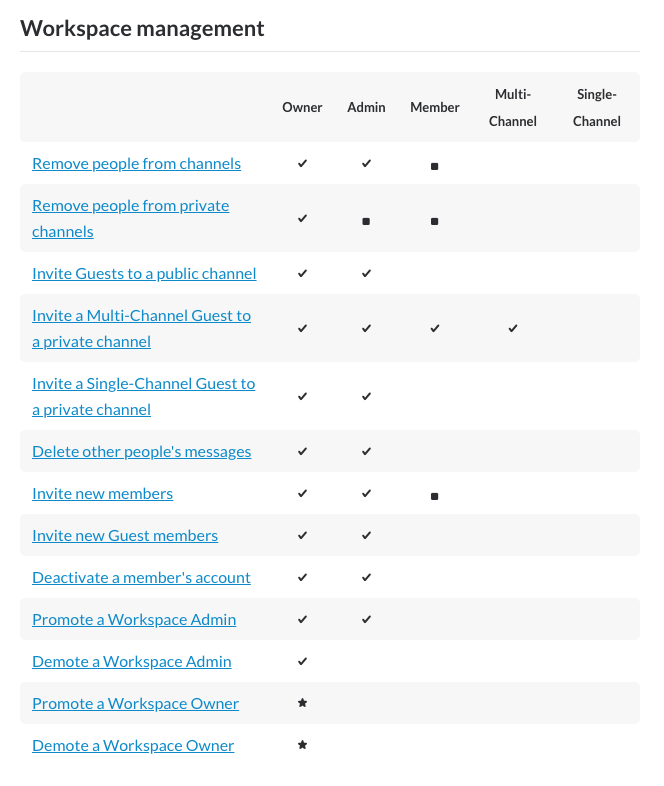When I joined the workplace Slack, I went in guns blazing. I posted too much, inserted myself into conversations, embarrassed myself in private channels. Don’t be like me! But also don’t be a terrified wallflower. Here’s how to settle into a new Slack without embarrassing yourself.
We’ll start with the three-step process from New York Times reporter Mike Isaac:
protocol for being invited to a new slack:
1. introduce self
2. shutup to see tenor of room and act accordingly
3. immediately namesearch yourself to see how much shit they talked about you before you got there
— ಠ_ಠ (@MikeIsaac) March 1, 2018
Introduce yourself
This means sending a message on the most general or introductory channel, but it also means uploading an avatar and filling out your profile. Help people get a read on you, and they will be much more open and friendly.
If this is a company Slack, put your real information in there! Our own Slack is full of default plaid avatars; some users haven’t even added their last names or job titles. For a few months one colleague replaced his face with Donald Trump’s arse. It is so dumb and bad.
“The main scary thing for me,” says Jezebel writer Ashley Reese, “is that I’ve ‘met’ a lot of new people via Slack over the week that I’ve been here, but I don’t have a fucking clue as to what most of them look like.” So for Ashley’s sake, upload your face.
Shut up
In the wise words of the internet, lurk moar.
- Don’t goof around in the “serious” channels.
- Don’t try to join in on every conversation. Don’t ask people to clarify every inside joke.
- Don’t say something controversial if no one was asking for your opinion.
- Don’t spam the /giphy command.
- And don’t use @here or @channel unless you’re bleeding.
You don’t have to be silent; obviously if it’s a work Slack you can’t be silent. Just err on the conservative side. Later on, we’ll tell you some horror stories about what happens when you don’t.
Listen
While you’re busy not talking, also try listening!
- Watch the tone and frequency of people’s messages. Note which channels are for idle chatter and which are only for work or announcements.
- Check who’s in each channel.
- Watch how people use the features: Who takes five lines to say something, and who writes one big paragraph? Who uses lots of exclamation marks and who just says “sure”? Do people use threads and emoji reactions? Do people say thank you?
- Do some recon. Search your own name. Then search any subject that people are likely to have strong opinions about. (Even when you’re not new, this is a good way to gauge how your own strong opinions will be received.)
- Check who can read what! Click the three-dot icon in the top right, click “Workspace Directory,” then click “Admin accounts” in the dropdown. Different roles have different read/write abilities, and the person who started your Slack can change those abilities. Read Slack’s guide to the complex role system. Admins can deactivate people’s accounts, change people’s display names, and even delete people’s messages.

Join some social channels
You don’t have to just sit there quivering in the corner. Find some social channels. Click the “Channels” heading on the left rail to see all the public channels. Ask your boss or colleagues in person for recommendations. And ask people you trust about what private channels are worth joining. (At our workplace, the dog channel is public but the cat channel is private.)
“It’s helpful to be in one or two non-work-related channels,” says A.V. Club executive editor Laura M. Browning. “Stay active enough that people recognise your name. The first time I went out to GMG to meet people, all the women said, ‘Oh, right! I recognise your name from the women-at-gmg channel.”
Include some small and specific channels. Again, read before you write too much, but find a couple of channels where people act silly and friendly, so you can jump in without much fear of breaking a rule.
Read a little of the channel’s backlog before you decide to join. It’s embarrassing to join a channel that’s not really for you, then exit minutes later, leaving a little grey notification of your temporary presence.
Start posting
If you’ve followed all the other steps, this part will be so much easier. At first, imitate other people’s general tone. The better you learn the existing flow of the Slack, the better you can get things done, socialise, and eventually make your own mark.
Be supportive of other people’s contributions; acknowledge important messages; contribute to brainstorms. I guess the business language for this is “be a team player.” Try not to use Slack like Twitter.
DM people
Spend less time in big channels and more time starting one-on-one conversations. This can weirdly feel more intimidating, but you’re less likely to screw it up, because you talk one-on-one all the time in real life. (Whereas you probably don’t often shout to a roomful of 200 people in real life.)
Browning, who is honestly amazing at Slack, has more advice here: “Don’t be shy about DMing people you don’t know just to say hi. It feels incredibly weird at first, but it makes eventual in-person meetings so much better.”
Compliment people on their work, send them interesting links, ask them for advice. Don’t bother someone all the time, but do reach out even when you’re intimidated. This is also a great way to express appreciation of a joke or contribution without clogging up a channel.
Don’t worry about it
You will still do something embarrassing. And you will survive. Many of my FMG colleagues felt terrified when they first joined the company Slack, especially if they made a misstep early on.
Lifehacker food and beverage editor Claire Lower embarrassed herself early on: “When I first joined the Lifehacker Slack, I was trying to be sassy about something but I used the wrong there/their. It was mortifying and everyone gave me shit.”
So did Victor Jeffreys, who takes all of FMG’s headshots and runs our events and would like to be credited as “the guy with no job title”: “Literally the very first thing I put into Slack was basically a tip. Within less than 10 seconds, Caity Weaver replied with a link to a story Gawker had written over a year earlier on the thing I thought was new. It took me MONTHS before I said anything in Slack again.”
So did Deadspin editor-in-chief Megan Greenwell: “On my second day in Deadspin Slack, everyone was talking about dogs, and someone mentioned someone named ‘Beef’ related to Laura Wagner. So I, reasonably, told Laura it was great that she has a dog named Beef. Turns out it’s her twin sister! Her sister is named Beth, but for reasons I still don’t understand everyone at Deadspin calls her Beef?!? I have been very reluctant to comment in Slack ever since.”
And several colleagues misused @here or @channel soon after joining, sometimes in the middle of the night. “The worst part about working in the office now,” says Jalopnik writer Justin Westbrook, “is I have to face everyone I’ve ever embarrassed myself in front of on Slack.” Danielle Steinberg, senior producer at Gizmodo, io9, and Earther, reminisced: “OMG when you’re new to Slack and you @-here a room and everyone jumps on you like rabid dogs.”
But you know what, we all survived, we’re all still here and if everyone hates us they keep quiet about it. So if you chat in the wrong channel, or you respond in earnest to a joke, or you kill a conversation, whatever, you’re fine, it could be a lot worse. If the consequences stay within Slack, and don’t get you fired or demoted or called into someone’s office, just accept it as a teachable moment and get back to work.

Comments